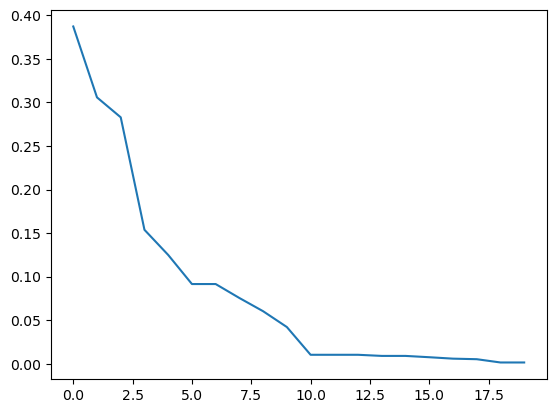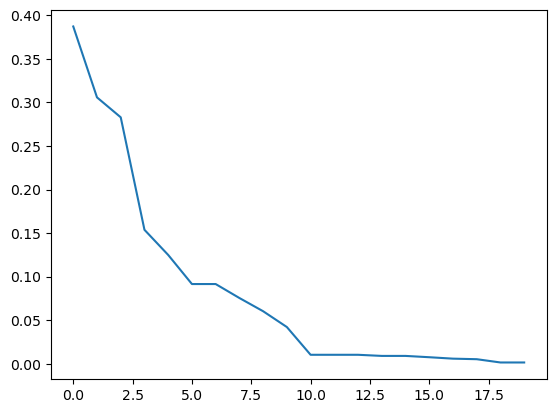Callback#
A Callback class can be used to receive a notification of the algorithm object each generation. This can be useful to track metrics, do additional calculations, or even modify the algorithm object during the run. The latter is only recommended for experienced users.
The example below implements a less memory-intense version of keeping track of the convergence. A posteriori analysis can on the one hand, be done by using the save_history=True option. This, however, stores a deep copy of the Algorithm object in each iteration. This might be more information than necessary, and thus, the Callback allows to select only the information necessary to be analyzed when the run has terminated. Another good use case can be to visualize data in each
iteration in real-time.
Tip
The callback has full access to the algorithm object and thus can also alter it. However, the callback’s purpose is not to customize an algorithm but to store or process data.
[1]:
import matplotlib.pyplot as plt
import numpy as np
from pymoo.algorithms.soo.nonconvex.ga import GA
from pymoo.problems import get_problem
from pymoo.core.callback import Callback
from pymoo.optimize import minimize
class MyCallback(Callback):
def __init__(self) -> None:
super().__init__()
self.data["best"] = []
def notify(self, algorithm):
self.data["best"].append(algorithm.pop.get("F").min())
problem = get_problem("sphere")
algorithm = GA(pop_size=100)
res = minimize(problem,
algorithm,
('n_gen', 20),
seed=1,
callback=MyCallback(),
verbose=True)
val = res.algorithm.callback.data["best"]
plt.plot(np.arange(len(val)), val)
plt.show()
=================================================================
n_gen | n_eval | f_avg | f_min | f_gap
=================================================================
1 | 100 | 0.8402330805 | 0.3110080067 | 0.3110080067
2 | 200 | 0.5840619254 | 0.2608389362 | 0.2608389362
3 | 300 | 0.4311230739 | 0.2141791742 | 0.2141791742
4 | 400 | 0.3256989200 | 0.1747990986 | 0.1747990986
5 | 500 | 0.2528832854 | 0.1090437159 | 0.1090437159
6 | 600 | 0.1957895271 | 0.0883593233 | 0.0883593233
7 | 700 | 0.1498475068 | 0.0723121564 | 0.0723121564
8 | 800 | 0.1147224003 | 0.0385041510 | 0.0385041510
9 | 900 | 0.0886857837 | 0.0321901509 | 0.0321901509
10 | 1000 | 0.0669225385 | 0.0278150867 | 0.0278150867
11 | 1100 | 0.0479183842 | 0.0258741635 | 0.0258741635
12 | 1200 | 0.0371069207 | 0.0169932013 | 0.0169932013
13 | 1300 | 0.0298104627 | 0.0169932013 | 0.0169932013
14 | 1400 | 0.0251838079 | 0.0163479517 | 0.0163479517
15 | 1500 | 0.0217146006 | 0.0118196679 | 0.0118196679
16 | 1600 | 0.0175706067 | 0.0070060442 | 0.0070060442
17 | 1700 | 0.0140096409 | 0.0053171551 | 0.0053171551
18 | 1800 | 0.0109934002 | 0.0052887786 | 0.0052887786
19 | 1900 | 0.0088322394 | 0.0045948657 | 0.0045948657
20 | 2000 | 0.0072640947 | 0.0040418655 | 0.0040418655

Note that the Callback object from the Result object needs to be accessed via res.algorithm.callback because the original object keeps unmodified to ensure reproducibility.
For completeness, the history-based convergence analysis looks as follows:
[2]:
res = minimize(problem,
algorithm,
('n_gen', 20),
seed=1,
save_history=True)
val = [e.opt.get("F")[0] for e in res.history]
plt.plot(np.arange(len(val)), val)
plt.show()
